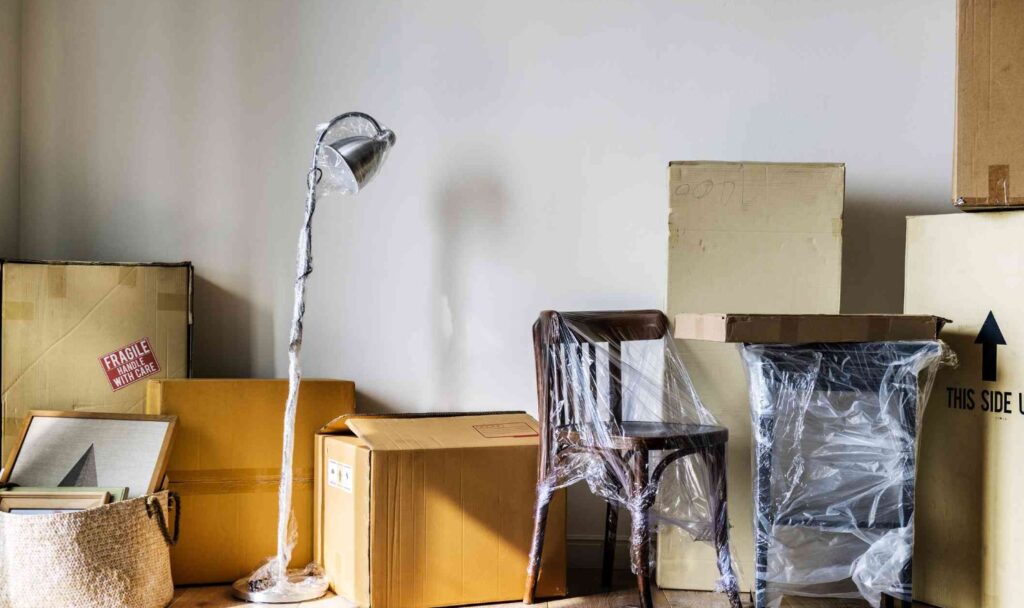Moving can be an exciting yet daunting experience. Whether you are relocating to a new home or office, the process involves numerous tasks, decisions, and challenges. To help you navigate through this transitional period with ease, we’ve compiled a comprehensive guide of pro tips from expert movers in Brampton. These insights will ensure your move is seamless, stress-free, and successful.
Key Considerations Before You Move
Before diving into the moving process, take the time to consider the following factors:
1. Assessing Your Needs and Budget
To kickstart your move, begin by assessing your needs and budget. Determine the size of your move, the distance to your new location, and the services you require. Create a budget that covers all aspects of the relocation, including packing materials, moving company fees, and any additional expenses that may arise.
2. Researching and Hiring a Reputable Moving Company
Researching and hiring a reputable moving company is a crucial step to ensure a smooth and successful relocation. To make the process easier and more effective, follow these essential tips:
- Online Reviews and Testimonials: Start your research by reading online reviews and testimonials from previous customers. Look for moving companies with a high rating and positive feedback, as this indicates their reliability and commitment to customer satisfaction.
- Ask for Recommendations: Reach out to friends, family, and colleagues who have recently moved. Personal recommendations can provide valuable insights into the moving company’s professionalism and efficiency.
- Check Licensing and Insurance: Verify that the moving company you are considering is properly licensed and insured. This ensures that they operate legally and can be held accountable for any damages or loss during the move.
- Obtain Multiple Quotes: Request quotes from several moving companies to compare their pricing and services. Be cautious of unusually low quotes, as they may indicate hidden fees or subpar service.
- In-Home Estimates: Opt for in-home estimates rather than over-the-phone quotes. In-person assessments allow the movers to evaluate the size of your move accurately and provide a more realistic estimate.
- Transparent Pricing and Contracts: Choose a moving company with transparent pricing and clear contractual terms. Avoid companies that use vague language or hesitate to provide written agreements.
- Experience and Expertise: Look for a moving company with a proven track record and years of experience in the industry. Seasoned movers are more likely to handle challenges efficiently and with professionalism.
- Customer Service: Evaluate the customer service of the moving company by contacting them with any questions or concerns. A responsive and helpful customer support team reflects the company’s dedication to its clients.
- Check for Complaints: Research the moving company’s complaint history through organizations like the Better Business Bureau. Avoid companies with a pattern of unresolved issues and dissatisfied customers.
- Visit Their Office: If possible, visit the moving company’s physical office to gauge their professionalism and organizational standards. A well-maintained office space can indicate a reliable and responsible company.
- Ask About Subcontractors: Inquire if the moving company uses subcontractors for any part of the moving process. If they do, ensure that the subcontractors also meet the same standards of professionalism and expertise.
- Understand Additional Services: Clarify what additional services the moving company offers, such as packing assistance, storage options, or specialized handling for fragile items. These services can make your move more convenient and efficient.
- Get a Written Inventory: Request a written inventory of all items being moved. This list will serve as a reference point during the unpacking process and help identify any missing items.
- Timing and Availability: Check the availability of the moving company on your preferred moving dates. Early booking ensures you secure the desired moving day and time.
- Ask for Referrals: Request references from the moving company and follow up with past customers to hear about their experiences. A reputable company will gladly provide references to showcase their reliability.
3. Decluttering and Organizing Belongings
Decluttering and organizing your belongings before a move is an essential step to ensure a smooth and efficient relocation process. By carefully sorting through your items and determining what to keep, donate, or discard, you can reduce the number of things you need to transport and make the unpacking process at your new location more manageable.
To help you understand the differences between decluttering and organizing, let’s explore a comparative table:
| Aspect | Decluttering | Organizing |
| Objective | To eliminate unnecessary and unused items. | To arrange and categorize belongings efficiently. |
| Process | Sorting through items and deciding what to let go. | Creating designated spaces for each item category. |
| Benefits | Reduces the number of items to be moved. | Facilitates easy access and retrieval of belongings. |
| Approach | Focuses on purging and minimizing possessions. | Emphasizes arranging and optimizing storage space. |
| Decision-Making | Based on necessity, usefulness, and sentimental value. | Based on accessibility, frequency of use, and function. |
| Time Investment | Can be time-consuming, especially for sentimental items. | Requires planning and setting up efficient systems. |
| Pre-Move Preparation | Essential for a cost-effective and organized move. | Sets the stage for an orderly and stress-free relocation. |
| Post-Move Efficiency | Streamlines unpacking and settling into the new space. | Simplifies locating and utilizing belongings. |
By combining the decluttering and organizing processes, you can ensure a more efficient and enjoyable moving experience. Decluttering will help you reduce unnecessary items, minimizing the workload for the movers and creating a clutter-free new space. Organizing your belongings will ensure everything has a designated place, making it easier to unpack and settle into your new home with ease.
4. Securing Moving Insurance
Protect your belongings during the move by securing adequate moving insurance. Even with the most reliable movers, accidents can happen. Insurance will offer peace of mind and financial protection in case of any unforeseen incidents.
Packing Like a Pro
Packing is a critical aspect of the moving process. Follow these expert tips to ensure your belongings stay safe and organized:
1. Gathering High-Quality Packing Supplies
Invest in sturdy packing supplies to safeguard your items during transit. Strong cardboard boxes, bubble wrap, packing tape, packing peanuts, and furniture blankets are essential for secure packing.
2. Labeling Boxes Clearly
As you pack, label each box clearly with its contents and the room it belongs to. This labeling system will simplify the unpacking process and help movers place boxes in the appropriate rooms at your new location.
3. Disassembling Furniture Properly
For larger furniture pieces, disassemble them properly before the move. Keep all screws and nuts in labeled bags and tape them securely to the furniture to avoid losing essential parts.
4. Packing a “Moving Day Essentials” Box
Prepare a box containing essential items such as toiletries, a change of clothes, important documents, and any immediate necessities. This box will come in handy during the first day at your new location when unpacking is still in progress.
Managing Moving Day
The big day has arrived! To ensure everything runs smoothly:
1. Confirming Details with the Moving Company
Double-check all details with the moving company, including the time of arrival and any special instructions. Clear communication ensures a smooth moving day experience.
2. Supervising the Loading Process
Supervising the loading process during your move is a crucial step to ensure the safety and proper handling of your belongings. By being present and actively involved in this stage, you can prevent potential damages, ensure items are loaded securely, and maintain peace of mind throughout the relocation.
To understand the importance of supervising the loading process, let’s examine a comparative table:
| Aspect | Supervising the Loading Process | Not Supervising the Loading Process |
| Protection of Belongings | Ensures proper handling and protection of items. | Relies solely on the movers, increasing the risk of damage. |
| Efficient Space Usage | Maximizes the use of available space in the moving truck. | Items might be loaded haphazardly, wasting valuable space. |
| Preventing Losses | Minimizes the risk of items being left behind. | May lead to forgotten items and additional stress. |
| Fragile Item Handling | Provides special attention to fragile items. | Fragile items may not be given adequate care. |
| Personal Supervision | Allows you to personally guide the loading process. | Leaves the responsibility entirely to the movers. |
| Addressing Concerns | Enables immediate attention to any concerns or issues. | Any issues discovered later may be harder to resolve. |
| Valuable Items Security | Offers added security for valuable belongings. | Valuables may not receive the necessary attention. |
| Load Arrangement | Ensures efficient placement of items for easy unloading. | Unloading may become chaotic and disorganized. |
| Peace of Mind | Provides reassurance and control during the move. | May lead to stress and uncertainty about the move. |
| Customized Load | Allows customization of the load based on your needs. | Standardized loading may not cater to your preferences. |
Supervising the loading process grants you the opportunity to actively participate in your move, ensuring that your belongings are treated with care and attention. It also enables you to communicate directly with the movers, address any specific concerns, and oversee the organization of the items within the truck. By taking an active role in the loading process, you can contribute to a successful and well-organized relocation.
3. Completing a Final Walkthrough
Before leaving your old property, conduct a final walkthrough to ensure nothing is left behind. Check closets, cabinets, and storage spaces thoroughly.
4. Being Prepared for Weather Changes
If your move involves crossing different climates, be prepared for weather changes. Have appropriate clothing and protection for adverse conditions.




